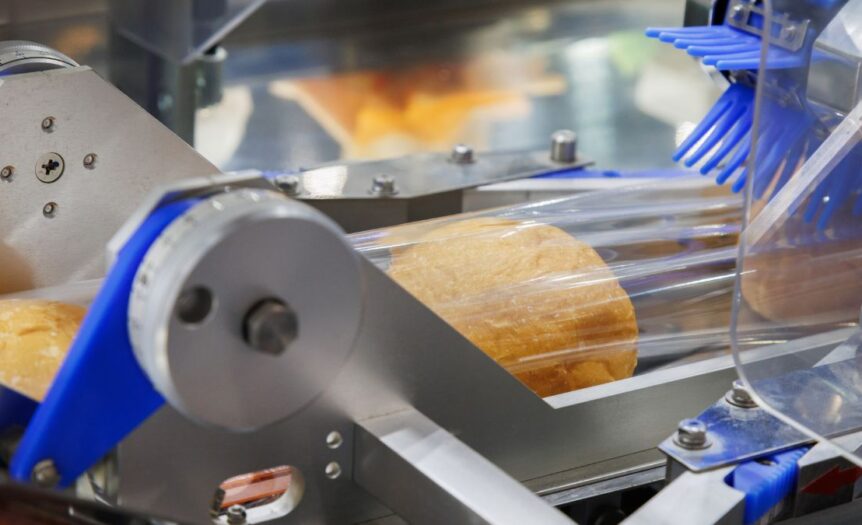The food industry is one of the largest in the world. Food is essential for the survival of everyone on the planet, making safe packaging crucial. Food-grade packaging applies to processing, distributing, and storing food and beverages.
Let’s look at what you should know about food-grade packaging and why it matters.
Types of Food Grade Packaging
Different packaging materials—plastic, glass, metal, paper, and biodegradable polymers—are available for food packaging. Each material has advantages and disadvantages. For example, plastic is the most common material for food packaging because it is lightweight, flexible, transparent, and cost-effective.
Glass is another popular material because it does not react with food, is non-toxic, and recyclable. Metal packaging is also popular because of its durability and ability to be sealed. Finally, paper packaging is an eco-friendly option but has lower durability, water resistance, and shelf life than other packaging materials.
Food Safety and Packaging
Food packaging safety is critical for protecting consumables from contamination and preventing the growth of bacteria. Harmful chemicals, such as BPA, PVC, and phthalates, exist in some plastic packaging materials, which can enter food and cause health problems, such as cancer and hormonal disruptions.
For example, the sanitary standards of food-grade conveyors must meet strict guidelines set by the United States Department of Agriculture (USDA), Food and Drug Administration (FDA), and Occupational Safety and Health Administration (OSHA) to ensure the packaging process does not contaminate food. The demand for food-grade packaging materials free from harmful chemicals increases as consumers become more conscious about their health and environmental preservation.
Shelf Life and Packaging
Food packaging plays a significant role in extending the shelf life of food products. It protects consumables from exposure to oxygen, moisture, light, and other environmental factors that can cause spoilage. The right packaging materials can preserve food quality and nutritional value for an extended period, ensuring it stays fresh for consumption. However, improper packaging can shorten shelf life, reduce quality, and cause spoilage.
Environmental Impact of Packaging
The use of non-biodegradable packaging materials has caused significant environmental problems. Plastic packaging pollutes waterways and oceans and threatens the survival of marine life.
Food-grade packaging, particularly biodegradable packaging materials, can reduce environmental pollution. Producers and suppliers in the food industry must adopt eco-friendly packaging to protect the environment and conserve natural resources.
Importance of Choosing the Right Packaging
Choosing the right food-grade packaging is essential to maintain quality, safety, and shelf life. Food manufacturers must understand each packaging material’s properties, advantages, and disadvantages to provide high-quality consumables for consumers.
Producers and suppliers must choose packaging materials with relevant certifications from organizations the FDA, European Union (EU), and International Organization for Standardization (ISO). Additionally, they must use non-toxic materials to ensure consumer safety and compliance.
Food-grade packaging plays a crucial role in the food industry. Choosing the right packaging material requires careful consideration of various factors, such as food type, packaging properties, regulations, and environmental impact. By understanding the importance of food-grade packaging, food and beverage manufacturers can make informed decisions that benefit everyone.










 Deering Estate
Deering Estate
 Massage Envy South Miami
Massage Envy South Miami
 Calla Blow Dry
Calla Blow Dry
 My Derma Clinic
My Derma Clinic
 Sushi Maki
Sushi Maki
 Sports Grill
Sports Grill
 The Healthy Kitchen
The Healthy Kitchen
 Golden Rule Seafood
Golden Rule Seafood
 Malanga Cuban Café
Malanga Cuban Café

 Kathleen Ballard
Kathleen Ballard
 Panter, Panter & Sampedro
Panter, Panter & Sampedro
 Vintage Liquors
Vintage Liquors
 The Dog from Ipanema
The Dog from Ipanema
 Rubinstein Family Chiropractic
Rubinstein Family Chiropractic
 Your Pet’s Best
Your Pet’s Best
 Indigo Republic
Indigo Republic




 ATR Luxury Homes
ATR Luxury Homes


 2112 Design Studio
2112 Design Studio
 Hamilton Fox & Company
Hamilton Fox & Company
 Creative Design Services
Creative Design Services
 Best Pest Professionals
Best Pest Professionals
 HD Tree Services
HD Tree Services
 Trinity Air Conditioning Company
Trinity Air Conditioning Company
 Cisca Construction & Development
Cisca Construction & Development
 Mosquito Joe
Mosquito Joe
 Cutler Bay Solar Solutions
Cutler Bay Solar Solutions


 Miami Royal Ballet & Dance
Miami Royal Ballet & Dance
 Christopher Columbus
Christopher Columbus
 Pineview Preschools
Pineview Preschools
 Westminster
Westminster
 Carrollton
Carrollton
 Lil’ Jungle
Lil’ Jungle
 Frost Science Museum
Frost Science Museum
 Palmer Trinity School
Palmer Trinity School
 South Florida Music
South Florida Music
 Pinecrest Orthodontics
Pinecrest Orthodontics
 Dr. Bob Pediatric Dentist
Dr. Bob Pediatric Dentist
 d.pediatrics
d.pediatrics
 South Miami Women’s Health
South Miami Women’s Health

 The Spot Barbershop
The Spot Barbershop
 My Derma Clinic
My Derma Clinic




 Miami Dance Project
Miami Dance Project

 Rubinstein Family Chiropractic
Rubinstein Family Chiropractic
 Indigo Republic
Indigo Republic

 Safes Universe
Safes Universe
 Vintage Liquors
Vintage Liquors
 Evenings Delight
Evenings Delight





 Atchana’s Homegrown Thai
Atchana’s Homegrown Thai
 Baptist Health South Florida
Baptist Health South Florida

 Laser Eye Center of Miami
Laser Eye Center of Miami
 Visiting Angels
Visiting Angels
 OpusCare of South Florida
OpusCare of South Florida

 Your Pet’s Best
Your Pet’s Best





 HD Tree Services
HD Tree Services
 Hamilton Fox & Company
Hamilton Fox & Company


 Creative Design Services
Creative Design Services